Peppers are some of the most popular vegetables in the world. Varieties like Bell Pepper (also known as Capsicum) are beloved by hobby gardeners worldwide, and spicy varieties like Jalapeno and Habanero are grown by more adventurous people. However, some problems may arise when growing your Peppers. Let’s check out 17 common Pepper/Chili plant problems below.
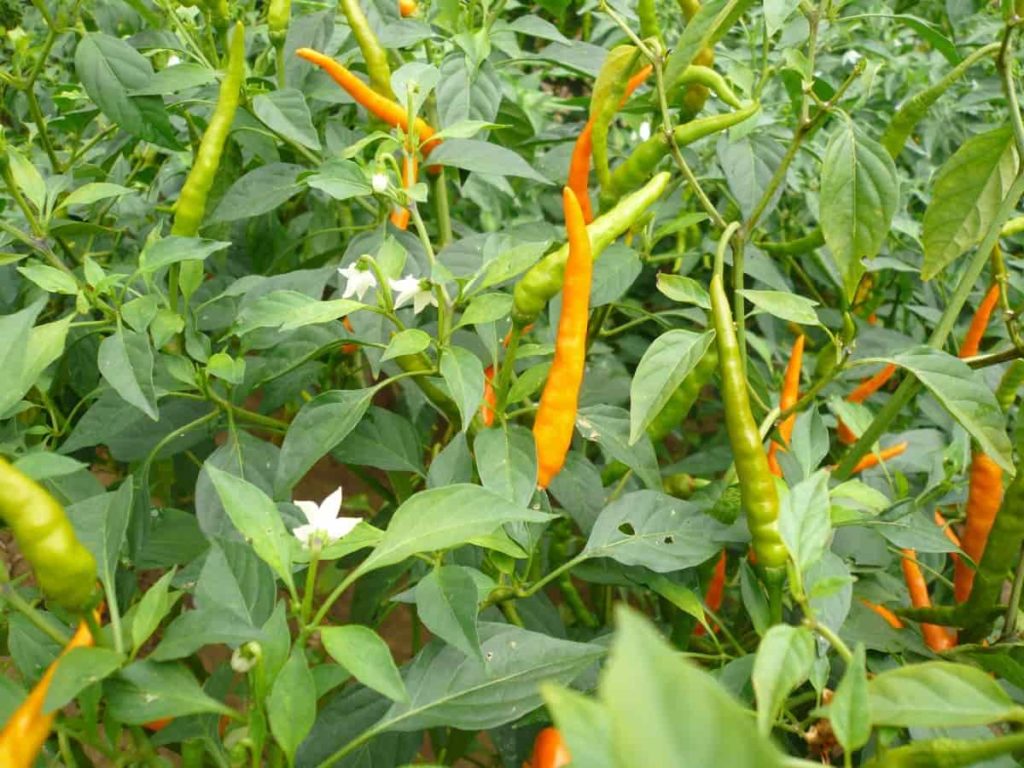
Common problems of Pepper plants include yellow leaves, damage from various pests, viral and fungal diseases, inadequate nutrients, and water-related problems. Providing the right amount of heat, light, and nutritious soil is key for healthy Peppers. It’s great fun to grow Peppers, but it doesn’t always work completely. Some years, it significantly reduces crops due to unexpected diseases or problems with Pepper plants. Being prepared to face issues that come your way is important for any gardener.
By knowing new techniques to keep your plants healthy, you will be able to produce a rich crop with more Peppers than you can’t imagine. In addition, you can learn preventive measures such as removing garden debris, allowing air circulation, and rotating crops to help prevent pests and diseases from finding your garden.
17 common Pepper/Chili plant problems
The seed of the Pepper plant is not going to grow
Depending on your location, you may be out of season unless you see that the germination has not taken place. So, you need to wait until next season to grow your Pepper plants. The most common reason why Pepper seeds are not growing is soil temperature. Pepper plants can survive in soil warmer than 26°C.
Solution – Keeping soil above 26°C can be challenging in most climates, so it is recommended to start growing indoors. This process takes about a week, but some varieties may take too long.
Pepper plants are bending/falling
Bending is usually caused by overheating. When Pepper plants are exposed to extreme heat and are not given the right amount of shade and water, they are prone to wilting and dehydration.
Solution – When dealing with bent plants overheating, you have a couple of options. The first option is for gardeners to use moving pots for their plants or a movable garden bed. If you can move your plants to a different part of your home, bring them to a shady area and make sure to water them more fully. To meet the needs of the bending plants, you need to put more water in the plants. Instead of just adding more water to plants, you should increase the intervals you water them.
In case you missed it: Easy Vegetables to Grow at Home in India: For Pots, Balcony, Indoors, Terrace, and Backyard
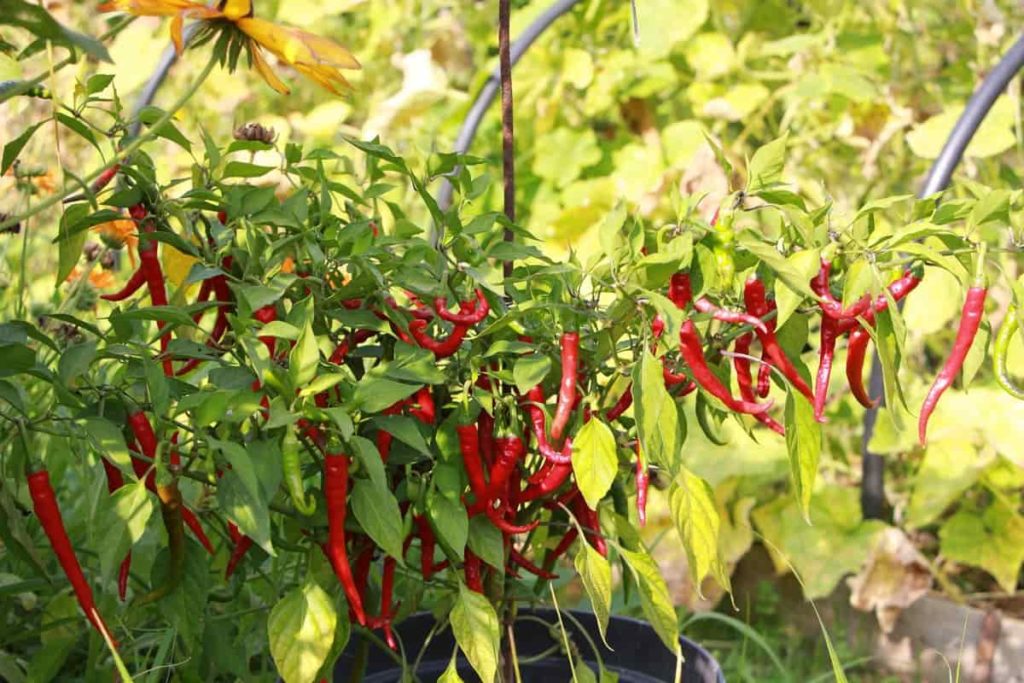
Your Pepper plants have stopped growing
If you are growing Pepper plants in pots in which you have acquired them as seedlings, you do not see much growth after some time as the roots are likely tied inside the pot, and the plant has potentially sapped the soil of all nutrients.
Solution – To solve this problem, you must re-pot your Pepper. First, you have to pull the plant out of the pot and gently loosen the root structure, getting rid of some extra old soil. Then place the plant in a half-filled pot with new soil or manure. Next, fill the surrounding saplings with more soil or manure and give them good water. It will help your plant grow better by giving more space to the roots to breathe and more nutrients to absorb the plant.
Instead of moving or replanting your Peppers, you should gently mix the soil around the Pepper plant to solve this problem. Then you should add a small layer of compost or manure around the plants. Then water the plants and make sure that the soil does not soak too much. Giving more water can also be a problem as too much water will freeze in the ground, causing bacteria and fungi to accumulate and grow.
Pepper plant turning yellow
Pepper plants usually cause yellowing or deformities due to hydration or lack of nutrients in the soil.
Solution – If you believe soil is a problem, find a pH-neutral compound that contains nutrients specifically for plant growth. The loamy soil, made of sand, and a little soil, is the perfect soil for Pepper plants. Usually, yellow is on the leaves, so you can always pinch the leaves in question if it’s just one or two. You should act quickly to save it when the discoloration has spread to other parts of the plant.
Pepper plant dropping buds
Pepper plants can often drop buds when getting inappropriate amounts of water. Pepper plants will drop buds with more water and less water than other water-related issues. Fluctuations in the amount of water provided to the plant can emphasize it, causing buds to fall before they bloom correctly.
Solution – To avoid this, the water is only a few inches above the soil, about 2 to 3 inches every week.
In case you missed it: Growing Hydroponic Peppers for Dummies
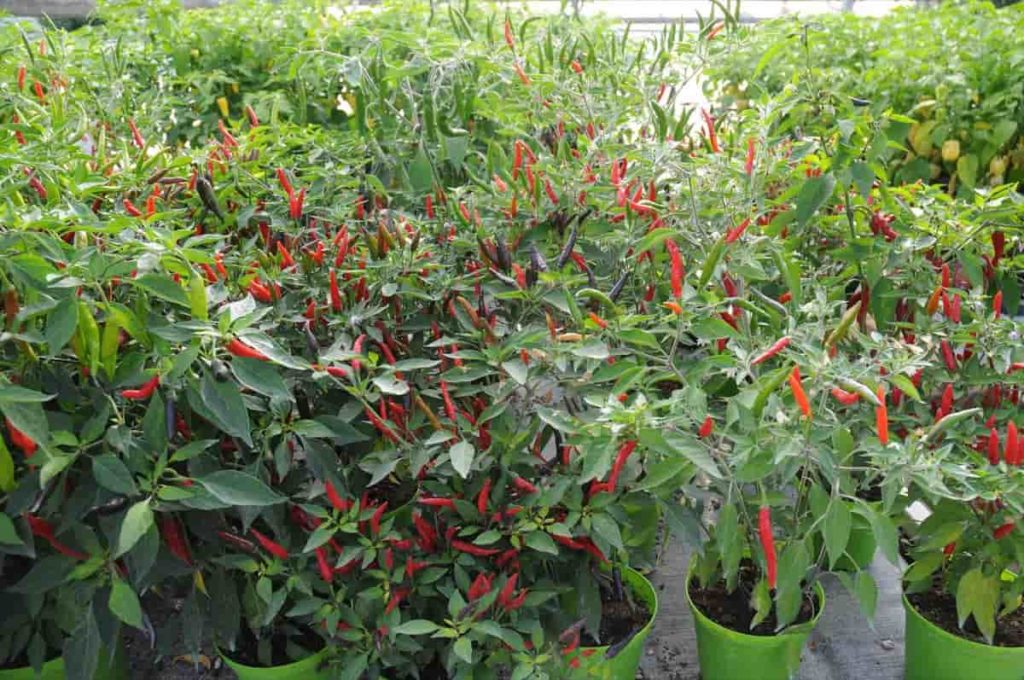
Pepper plant dropping its flowers
Pepper plants can drop flowers if there are no pollinated insects or a distinct lack of air circulation. This problem often occurs when Pepper plants are grown indoors. When they are not being pollinated, Pepper plants drop flowers.
Solution – Pepper plants are somewhat self-sustaining and do not need pests; instead, they can pollinate themselves and require a small functionality to transfer pollen from one flower to another. It is often done by air, but if plants are kept indoors, or there is not enough airflow, you may need to help a little. A small soft paintbrush carried in flowers to spread pollen in the air should trick.
Pepper plant not blooming
Pepper plants may be sticky, but the most common reasons for not blooming flowers are the incorrect temperature or blossom end rot.
Solution – Peppers thrive when they get at least six hours of sunlight and temperature around 26°C and should not go far beyond about 12°C; otherwise, their flowers may not bloom. Blossom end rot is another common reason for the blooming of Pepper plants and is usually caused by calcium deficiency.
A straightforward solution is to add calcium to the soil, but sometimes the problem is not that the soil contains enough calcium, but the plant is not taking enough calcium from the soil so fast that it can sustain its growth. However, by ensuring that your plant has sunlight, water, and nutrients suitable, you should be able to protect your plant from this problem.
Damping-off
Solution – Keep the garden tools clean. Don’t water too much. Let the soil level dry before adding more water to the Pepper seedlings. Damping-off is an acute problem that can spread from one seed cell tray to another, affecting many different types of plants. Commonly, whole trays of plants are destroyed when the disease occurs, so be careful to avoid it.
In case you missed it: Growing Peppers in Pots from Seed, and Cuttings

Pests
Aphids
Aphids are small, soft-bodied pests that like to stick to the bottom of leaves and plant trunks. The aphids are usually green or yellow, but some are red, pink, brown, or black. They like to suck the juice from plants that attract ants and cotton mold.
Solution – Small aphids’ infections are rarely an issue, but significant infections can cause serious problems. Prune parts of the plant with most of the aphid and use neem oil to spray leaves and any growing fruit. You can also remove these pests from your plants with strong water jets.
Colorado potato beetle
These pests kill potato plants, but they also like to eat Pepper plants. Potato beetles feed on leaves, and plants are eliminated from severe diseases. Adult potato beetles are identified as black with yellow stripes and larvae red with blackheads. Adult beetles emerge in spring, and females lay eggs in two dozen or more batches.
Solution – It is important to remove adults and larvae from the plant as you see them. You can also use Bacillus thuringiensis in your garden, which effectively controls the larvae, but you have to apply Bacillus thuringiensis repeatedly to make it work.
Cutworms
Cutworm is one of the most common Pepper pests that target the seedlings, which chews the base of young plants almost overnight. Cutworms are at night, so you can pick up these pests by hand.
In case you missed it: How To Grow Chilli Plants At Home (Pepper/Mirchi)
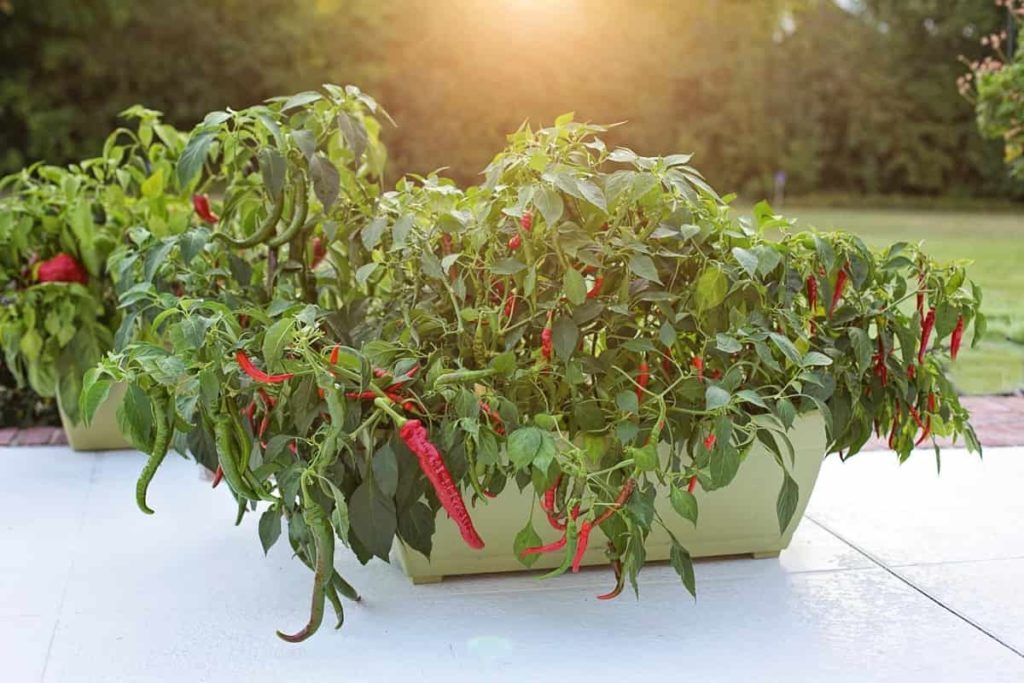
Solution – Raking the soil around the base of your plants helps expose the cutworm to remove them by hand. Spreading coffee grounds, eggshells, and diatomaceous earth helps discourage pests. To prevent your plant trunks from eating, you should also make collars around your plants with aluminum foil or cardboard.
Flea beetles
Flea beetles make small holes or pits in the leaves, making them look like Swiss cheese. Young plants and seedlings are likely to suffer damage from flea beetles, reducing or preventing plant growth.
Solution – A floating row cover placed on your weak plants is an excellent place to start covering. If you put a cover on your garden beds as soon as you plant the seedlings, they will be able to set up before the beetles become a serious problem. Some of the applications of diatomaceous earth effectively take care of these pests with neem oil. If you are not an organic gardener, consider using pesticides, including carbaryl, spinosad, bifenthrin, and permethrin.
Pepper weevil
These pests like to eat Pepper plant leaves, especially buds and young fruits. Larvae eat fruits, which does not make them unshaped and discolored. Eventually, buds and fruits fall from the plant. These insects are produced quickly; there are several species every year. It is difficult to control these pests because you need to kill them, including eggs, or they keep coming back.
Solution – Removing infected plants is a starting point for getting rid of Pepper weevils, and make sure you remove any fallen fruits on the soil surface. Spraying plants with pesticides that contain pyrethrin is an effective option to get rid of Pepper weevils.
In case you missed it: Pepper Varieties to Grow at Home (Chilli) – a Full Guide
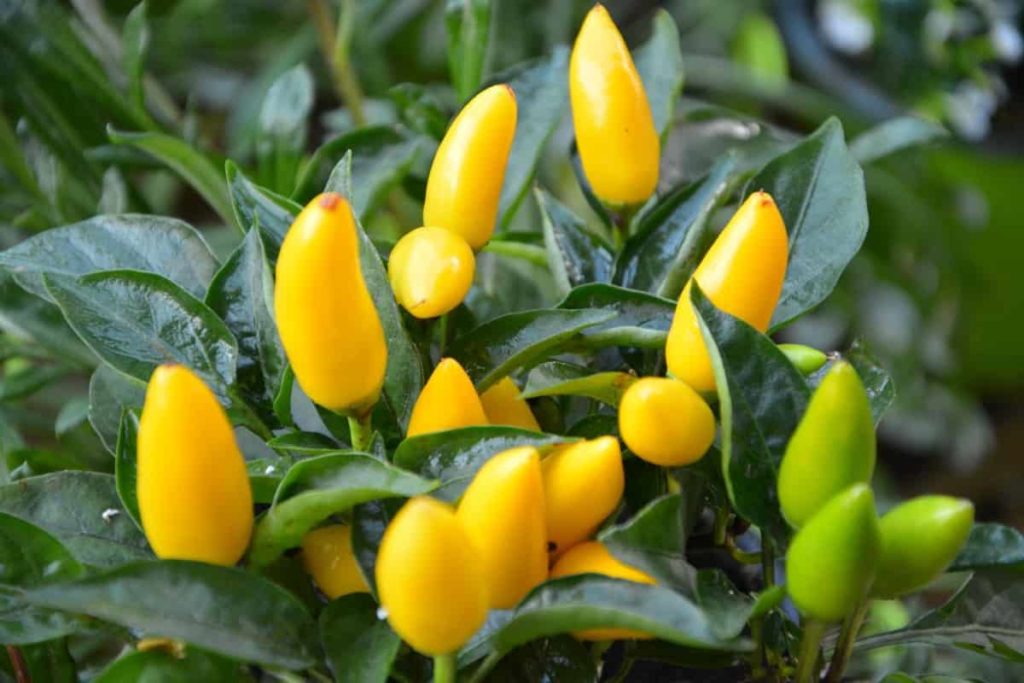
Diseases
Pepper leaf spot
Pepper leaf spot is most common in rainy, humid, and hot climates. These are the environmental conditions in which bacteria can spread most easily. Bacteria spread the leaf spot, so it can spread it by touching seeds or soil.
Solution – Remove the affected parts. Like the Pepper plants infected with the virus, you should remove parts of the plant that show signs of leaf spots. Provide proper fertilizer. With proper nutrition, Pepper plants can fight bacteria. Spray with natural fungicides. Use a copper-based fungicidal spray in the early morning or late evening to help reduce the spread. Avoid wetting leaves while watering. Constantly water the plant base to avoid spraying water on the leaves.
Mosaic virus on Peppers
Another very common problem with the Pepper plant is the mosaic virus. There are many different types of mosaic viruses, and once a plant is infected, it is irreversible. Mosaic viruses can be produced from seed or soil and transmitted by diseases like juice-sucking pests.
Solution – Remove the affected plants. There are no effective treatments for viruses. If you suspect a mosaic virus, remove the Pepper plants from the garden and burn them. Fruits are still safe to eat, but seeds can carry viruses, so don’t save seeds from infected fruits. Plant-resistant Pepper varieties. Some species have been more resistant to tobacco mosaic viruses, although none are resistant to cucumber mosaics and other viruses.
Blights on Peppers
Soil-borne pathogens transmit blight. If your Pepper plants have fewer leaves on the central corner, rain can cause soil to sprinkle on leaves, introducing the disease.
Solution – Plant your Peppers in a raised bed or pots to improve drainage. Scorching is most commonly found in gardens or fields. Rain will have less time to sit on the soil surface and spread pathogens in a raised bed or potted plant. Another step is using mulch, such as straw, grass clippings, or black trip. Mulching helps prevent spraying of soil on the leaves of your Pepper plant when it rains.
Verticillium wilt
Bacterial wilt is an issue that can affect Pepper plants along with many other vegetables. The bacteria plug the tissue of the plant’s tube, making it impossible for water to move throughout the plant. Generally, the Pepper plants infected with the verticillium wilt will first start wilting on one side of the plant.
Solution – Water your plants. The most common reason for the wilting of Pepper plants is only water requirement. Remove the affected plants. Like most disease plants, the first step is removing and destroying the affected plants. Next, add beneficial bacteria to the soil. The use of beneficial bacteria is effective in treating the treatment of bacterial wilting.
- How to Grow Hibiscus from Flower
- Plantation Ideas for Home Decoration: A Beginners Guide
- Flower Garden Designs and Layouts for Beginners
- Planting and Spacing Techniques in Papaya: A Beginner’s Guide
- Growing Gold: Essential Techniques for Planting Pineapples
- How to Make Kalanchoe Plant Bushy: Home Remedies and Solutions
- 11 Reasons Why Your Gardenia is Not Blooming: Home Remedies and Solutions
- Eco Elegance: The Guide to Designing a Drought-Tolerant Landscape
- Gardening on a Slope: Strategies for Hillside Landscaping
- Nourish and Flourish: Top Organic Mulches for Thriving House Plants
- Everything You Want to Know about Indian Mogra Flower: Discover Uses and Growing
- Green Thumb Success: Expert Tips for Cultivating Greenhouse Pumpkins All Year Round
- Maximize Growth & Flavor: The Ultimate Guide to Companion Planting in Herb Gardens
- How to Control Rhododendron Problems Naturally: Home Remedies and Organic Ways to Fix Them
- Natural Magic: The Remarkable Benefits of Cinnamon for Plants
- Best Steps to Revive Dying Tulip with Natural and Organic Treatment
- 10 Reasons Why Your Angel Trumpet is Not Blooming: Remedies and Treatment
- How to Fix Periwinkle Leaf and Flower-Related Problems: Natural Remedies and Solutions
- How to Fix Zinnias Leaf and Flower Problems: Discover Natural and Home Remedies
- Organic Steps to Induce Lemon Tree Flowers: A Comprehensive Guide
- Bloom Booster: Crafting the Perfect Homemade Bougainvillea Fertilizer
- Optimizing Growth: A Guide to Applying NPK Fertilizer for Potted Plants
- 10 Best Homemade Fertilizers for Rubber Plant: DIY Recipes and Application Method
- How to Boost Female Pumpkin Flowers: Effective Steps for More Flowers and High Yields
- Transform Your Indoor Garden: Top Benefits of Pink Salt for Houseplants
- 10 Best Homemade Fertilizers for Peacock Plants (Calathea): Easy DIY Guide
- Unlock Blooms: 9 Reasons Why Your Potted Chrysanthemum is Not Blooming
- 8 Reasons Why Your Potted Hibiscus is Not Blooming: Fix it with Simple Solutions
- Unlock Blooms: 9 Key Reasons Your Potted Frangipani Won’t Flower
- 10 Reasons Why Is My Ice Plant Not Blooming: Remedies and Treatment
- 10 Reasons Why My Potted Hydrangea Not Blooming: Treatment and Remedies
- 10 Reasons Why is My Wisteria Not Blooming: Remedies and Treatment
- 10 Reasons Why is My Goldfish Plant Not Blooming: Remedies and Treatment
- Maximize Your Space: Ultimate Guide to Balcony Gardening with Grow Bags
- 10 Reasons Why Your Iris is Not Blooming: Remedies and Treatment
- 10 Reasons Why Your Anthurium Plant is Not Blooming: Treatment and Remedies